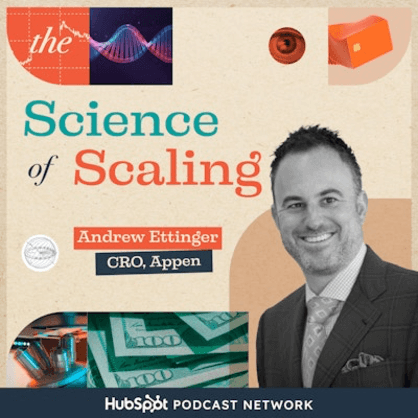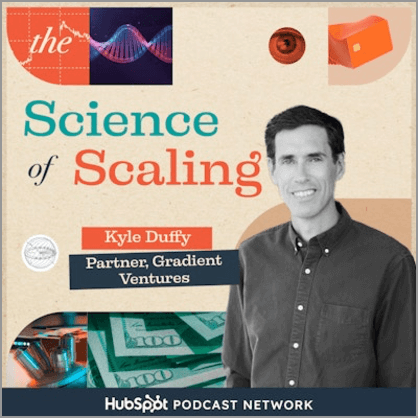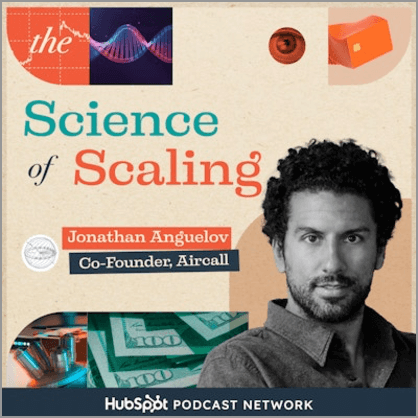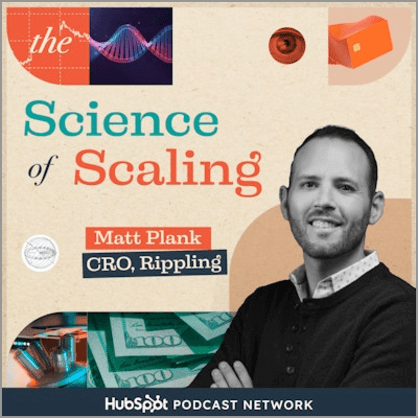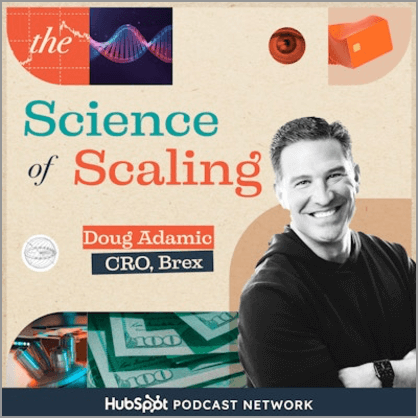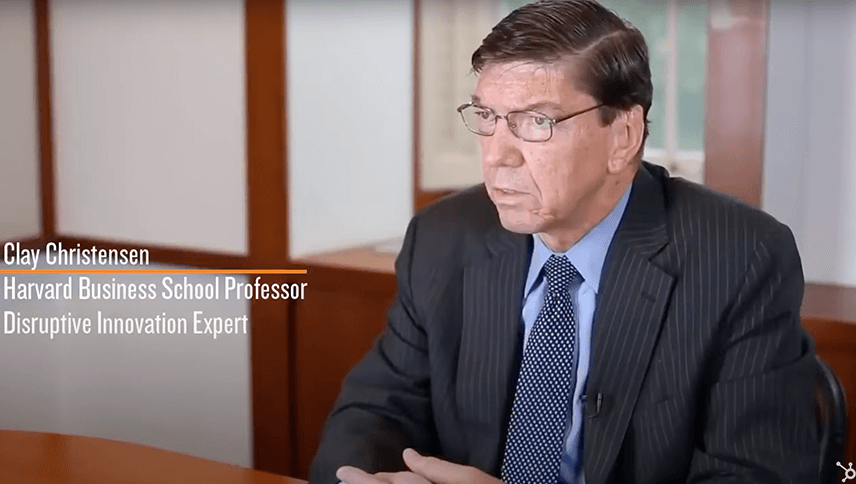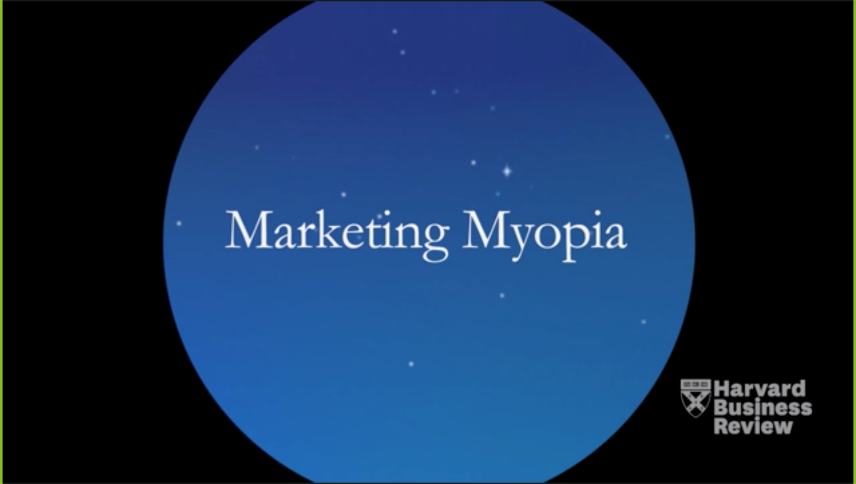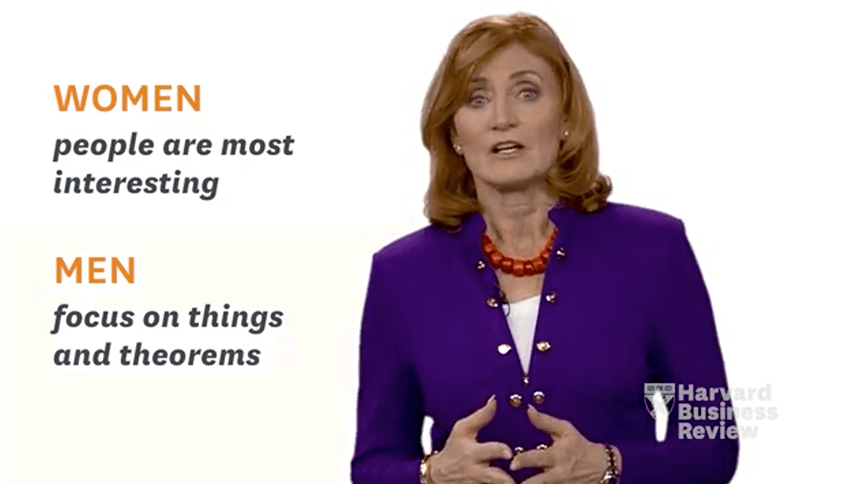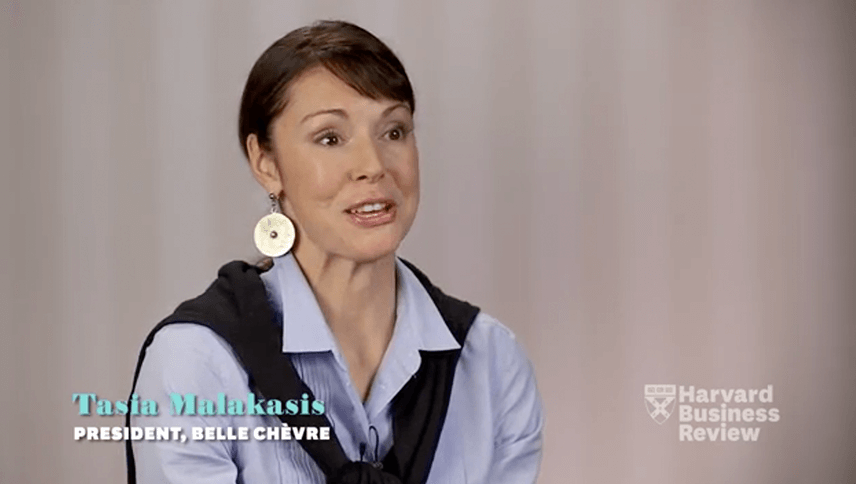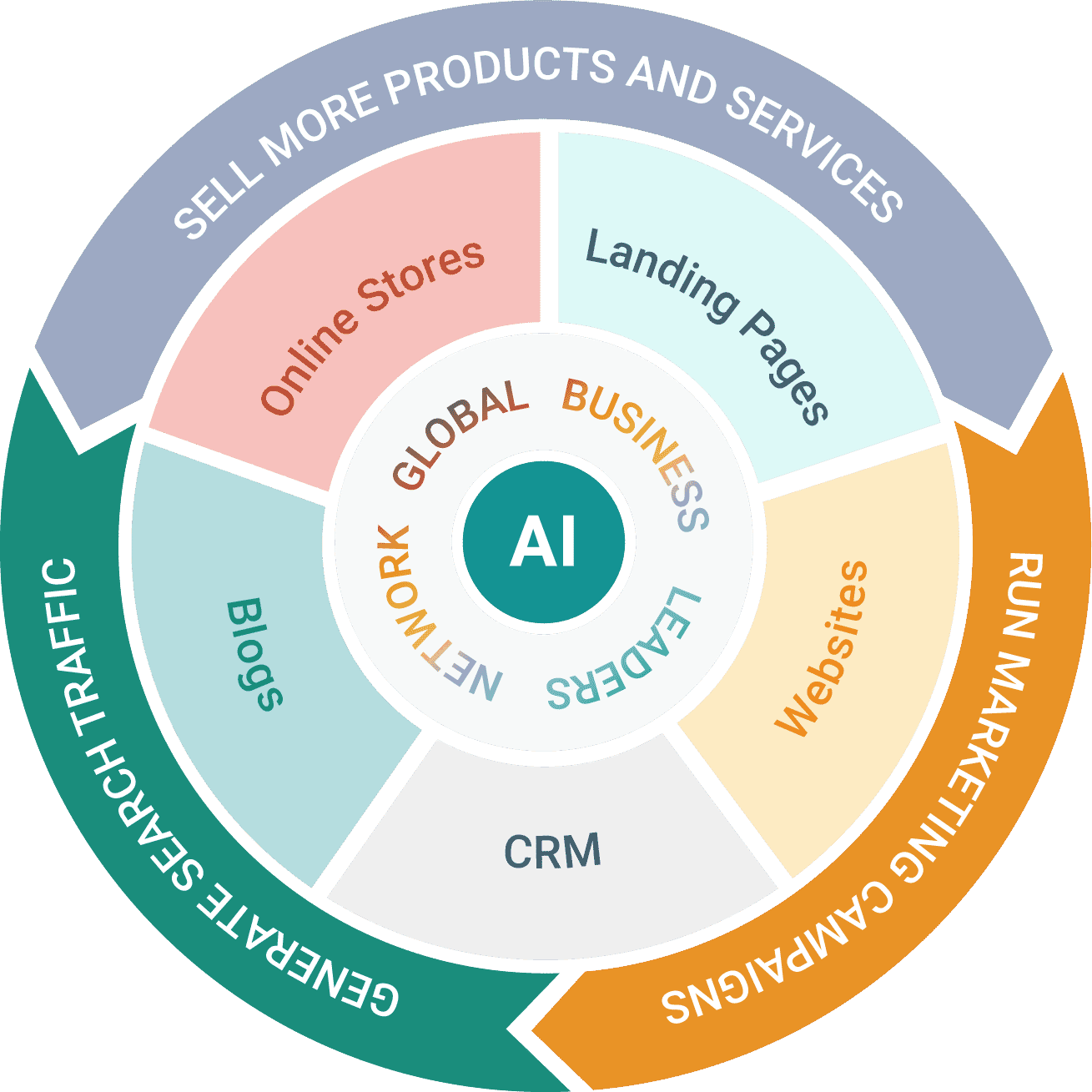Don’t Lead With The Product, Lead To The Product
Doug Adamic CRO, Brex
Nov 20, 2023
Mark Roberge: Hey folks, welcome to another episode of the science of scaling podcast. I’m your host, Mark Roberge. In this podcast, we study scaling, scaling revenues, scaling sales. There’s reams of research that shows we’re not very good as an ecosystem. We’ve got a lot better on product development, but on this scaling piece, we’ve got a lot to learn.
And I love in this podcast to bring in those who are the world’s best. The folks who have successfully scaled the unicorn sales teams across tech. Today we talk to Doug Adamic, CRO at Brex. This is going to be fun. He spent 16 years as CRO at Concur and managed them through the eventual acquisition at SAP.
He is one of the best at building teams to sell. Financial software. So he’s come in with an interesting challenge here at Brex. You know, they’re around, I don’t know, 50 million in revenue, 450 employees where he came in. He, at the time, had grown his business to 3, 500 employees and 3 billion in revenue.
And that’s the mission that he has. He’s got to transform the way they sell to sell more complex deals to more complex buyers We’re gonna get right on the front line and ask him how he took a 27 year old Transactional seller and taught him to be a high performing strategic account exec. Let’s get into this episode
Doug Adamic: Brex Started out as a credit card company for startups and their disruptive value proposition was the fact that they had an underwriting model that allowed an organization to be able to get credit against a bank account versus their. Personal guarantee, and that’s very, very desirable for founders starting out.
However, I don’t think that Brex recognized what happened if they did do this correctly. And the cohort of organizations did grow, they grew up on Brex, and now they have to divorce Brex and then go to another set of services. So I think what I probably would have advised is that, hey, this is a great idea, execute it.
Fully, but then begin to think about what the more upmarket or enterprise offerings would be as they graduate throughout this. Because if you can get an organization at a founder base, then you’re part of that journey. And if you can be able to grow with them, I don’t. I don’t think that they fully realized how important or how impactful that would be if they, and when they started to move up market.
Now we have more of a challenge of being able to create an understanding of what our brand is up market. Nobody knows who Brex is up market because even the companies that used to use us didn’t use us anymore. So they’ve lost connectivity to us. So I think that if they had figured that out a little bit earlier, they would have been able to.
Probably more naturally have graduated organizations along that path a little bit faster or better.
Mark Roberge: I can’t think of a unicorn that didn’t have to go through what you all have been going through and that we, you brought in to do. So this is such an important playbook and there’s so many aspects to the playbook.
There’s a product development cycle, there’s rebranding. What we want to dive into today is you also have to. Pivot your sales team and their skills. Can you talk about that? Like where, where are they at in terms of like how they sold and wherever you had to take them?
Doug Adamic: Yeah, sure. So the business that they were in before was what I characterize more as a transactional business where.
An organization is informed or a group of people are informed or an individual is informed based on either the brand or an understanding from the marketplace and then a need is created. They’re like, yeah, we do need a credit card. Then they figured it out. We email them. We would get responses back. We would jump on the phone with them and they’d be like, yeah, that sounds like a great idea.
You hit hold, you put them into underwriting, they pass underwriting, they ship out a card, and then they start swiping the card. That process was a one week sale. It was a one call close. There was no contracts. There was no commitment. There was nothing involved with where we are today is. That we are now introducing a value proposition that is much more complex.
It’s a value proposition that contemplates different business processes that are either governed or run by different. Vendors different departments, and so therefore there needs to be a deeper explanation and discovery associated with what is happening within a company, the pain or the business challenge that they’re facing.
There needs to be a positioning. We’re a multi product company. Now there needs to be a positioning of what. What combination of products is going to be best for that organization? There’s a contracting for it because now we have enterprise software, which comes with certain expectations and pricing and SLAs and, and requirements and.
Technology and all of the things associated with that. Most organizations can’t implement this on their own. So we’ve had to introduce the concept of an implementation department that goes ahead and gets them ready, configures the service, tests it and gets it ready to be able to roll out. Um, and then once it’s rolled out, there needs to be a customer success.
Components that make sure that they’re adopting, consuming and optimizing it because at the end of that journey, there needs to be a renewal and that’s the difference in the business. It was a transactional business that didn’t have any contractual obligation. There was no renewal process and they used it until they grew too big and then threw it away and then went to something else.
We’re now so. We’re trying to figure out what their business challenge is. So it’s a completely different business motion than it was before.
Mark Roberge: You’ve painted that journey nicely for us. It’s, it’s, uh, in terms of the different, different people that are involved. I want to focus in on the account executive piece.
both in who they are and what they do. So first off, and this will be kind of like, what would you advise someone do going through this, but also like, what did you do at Brax? Do you go find new talent to run this at the account executive level, or do you primarily promote people on your team that you see have that talent? Ability.
Doug Adamic: So it’s a different skill set. So there are a ease out there that do value a more transactional based sale where they do like that fast paced, you know, multiple deals a week, a day, a month kind of thing. And it’s sort of just a little bit more repetition. So. There was a bunch of AEs and leaders within Brex that valued that kind of business.
And what I’m introducing is an entirely new one. So some didn’t want to take the journey just because it wasn’t grooving for that. Those that did, it did take a little bit because selling a transaction based solution versus a more complex solution requires something that is critical, which is. Discovery, which means that you must have a level of business acumen to converse with the constituent at the company about the business they’re in, the job they’re performing in order for you to understand what the business problem is.
And so doing a credit card transaction is a very different kind of skill set than getting into. How a business works and how you’d be able to solve that business problem.
Mark Roberge: Hey folks, just Mark here. Wow. Is this consistent with what I see when I ask folks like Doug, who are experts at developing, picking, grooming, strategic account executives, account executives that can hit a million dollar plus quotas account executives that can.
Close million dollar deals. Business acumen is usually one of the first things that is mentioned. And he’s going to bring to life exactly what that means. I can tell you a way to think about it is being more outside in than inside out. We’re like inside out is like, here’s my product. Here’s what it does.
Does it work for you? Outside in is let me understand where you are in your role, your business. In fact, like even though I’m asking those questions as a seller, I totally understand what this compliance officer does all day. I totally understand what their problems are. I’m going to ask the questions to know how they’re specifically thinking about it.
But that is a huge difference. The other ones I often find is, The ability to develop a champion and the final one is the ability to understand complex political dynamics within an organization. Those are three pretty common skills that you don’t see super prevalent in the transactional seller that Doug’s talking about.
But you see as critical for this strategic seller that Doug is turning this team into. All right, let’s get back to him.
Doug Adamic: So yeah, there were a bunch of people that wanted to take that journey. And then yes, I’ve had to hire a bunch of people that already had that level of experience selling a SaaS based business solution to the office of the CFO.
Both of those combined have created a really, really cool culture to be able to accomplish that.
Mark Roberge: Does their involvement in that buying journey change? It sounded like in the transaction of one, it was kind of like close them and move on. But does the salesperson stay involved after now for like the renewal and the expansion?
Doug Adamic: My suggestion would probably be that the individual that makes the initial sale also probably would be responsible for any additional expansion or cross sell and upsell. That was a little bit different at Brax because we have tens. Of thousands of customers that use our service. So in our customer life cycle, we have net new business.
Um, folks that acquire prospects into customers. And because we have multiple products. We also have a customer selling team that works in conjunction with customer success to ensure that we’re either expanding that customer to different divisions or different countries around the world, or being able to find new business challenges where new sets of products could be sold.
So the business challenge gets a prospect to be a customer. Maybe very, very finite once they’re in the customer life cycle. Now they’re exposed to the full value proposition. And we have, and try to earn the right to be able to solve other problems for them, which lead to other products that we have and be able to cross sell.
Mark Roberge: Yeah, Doug’s doing a nice job of like showing us at the people level and the roles, how this is altered as we move into this transition that he’s taking Brex. And like, let’s just talk about specialization in general while Doug is on it. It’s a complicated question. People always ask, Hey, should I have an SDR cold call and an account executive sell and a customer success manager on board and renew?
Or should I have one person do everything? It is very in vogue today to specialize, but it’s not always optimal. If you think about like, um, McKinsey and BCG, like big consulting companies, they, their partners are actually kind of salespeople and they sort of do the whole thing. The specialization is great because you can choose the perfect person and skill for the stage.
Like usually the hardest part in that whole thing is the thing that Doug’s about to get into, which is this discovery and this tailoring of the pitch. And we wouldn’t want to almost like waste that person on cold calling or like apply that person on onboarding where we could find a different person.
So that’s the advantage. The disadvantage is You have to create this really complicated to align those organizations. Like no one’s going to set up a bad appointment if they’re the one that has to sell it and no one’s going to sell a bad customer if they’re the ones that has to onboard it. But once you specialize that happens and there’s a lot of complicated alignment that you have to fit in.
I know in this case I often see as we’re moving upstream like Brex is doing, we usually have the salesperson involved in the post sale, involved in the renewal, involved in the expansion because there’s a lot more. Quote unquote meat on the bone in terms of the count. We can turn a 100, 000 account into a 5, 000, 000 account.
But doing that requires that deep skill set that only that strategic account executive has. All right, let’s get back to Doug.
Doug Adamic: So the expectation is the long term value of a customer will be three, five times what their initial value is. going from a prospect to a customer. If I’m starting out, I’m thinking that that’s going to be a singular person.
If I have hundreds or thousands of customers, you may want to break that out because those are two very different kinds of selling sort of patterns and businesses and motions.
Mark Roberge: Okay. Let’s dive into that skill set then. So now I’ve got this, you know, 28 year old account executive who’s been doing a transactional process.
And what you’re talking about is a much higher level of selling. Yep. I, I love this level of selling. It’s talking to much more. Sophisticated executives, arguably, and walking them through a much bigger, more complex purchase. Where do you even start to teach that 27 year old to develop that skill and how to do that?
Doug Adamic: First of all, the organization has to have a fairly clear understanding of what their value proposition or positioning is in the market in order for that AE to be able to To be successful, they have to know what the purpose of the organization is and what the positioning of the solution or the offering is going to be.
And then work in conjunction with marketing to understand how leads are being able to be developed and curated and how they come in. AE in that particular position can’t rely exclusively on marketing to be able to do this. They’re going to have to pick up the phone and pound the phone to drive their own pipeline, especially if you’re in a new organization where there is no brand recognition or brand awareness that’s, that’s out there.
So the very, very first thing to understand is what is the product designed to do? If it’s consumed correctly, what is the impact it’s supposed to have on an organization? Who are the constituents or the, Jobs or the individuals in the organization that have a high probability of of either owning all or a portion of the business challenge that you’re solving.
Make sure that you have an understanding of the impact of the solution that you have, whether that’s. Savings or speed or insight or whatever it is. That’s going to be able to do that and make sure you understand how that’s going to impact the individual, the individual’s role, their department, and then the overall value of what that’s bringing to the organization.
What you need to be able to do is literally build out a script that walks you through step by step and asking questions and engaging that constituent. In a conversation that helps them understand what you do, what value you could bring the introduction of a business problem. They may or should have and then be able to articulate a little bit about how you’d be able to solve it with the sole goal of that initial conversation.
To get more time with them, to do a deeper discovery of how and what they’re dealing with at that period of time.
Mark Roberge: This is the second step. The next thing we need to do is give them a guide. I call it a discovery call guide that Doug is talking us through on like how to navigate. The discovery and the qualification of this particular account.
This is not really, he’s saying script, but it’s not, don’t confuse this with like, ask this question. Then ask this question. There’s a solution. It’s really a collection of questions that they might ask depend on a context. And that context could be what they’re currently using. It could be what their specific role is.
And we want to have like a one pager in front of the seller as a little bit of a cheat sheet because this is a very intense moment to have options of questions to go to that are high value questions. All right, let’s get back to Dub.
Doug Adamic: Be prepared. You have to make sure you have, you know, your notes and your scripting in front of you. You have to make sure that you have your ability to be able to overcome objections. You have to be okay pounding your head against the wall a few times to be able to understand what’s going on. And then, Once you get through that, you get to the second call, and the second call is where you’re going to be able to ask a ton of questions to get discovery, to understand how they view this business problem, and if it was solved.
Then how would that individual view the benefit being, and if you can do that in the first couple of calls, then that’s how you build sustainable pipeline. Not everybody’s going to want the product. Okay, so this is a numbers game, so let’s not ever forget that if you’re. Devoting your life to being an AE, you’re in the numbers game, but if you keep your Rolodex, if you keep your notes, if you have some kind of CRM system, if you’re capturing this, if you follow up, when you follow up, if you make sure that you’re building that pipeline up, then what will happen is you’ll always be in some interesting discussions.
Um, with different constituents in an organization about business challenges they have around the value proposition and the positioning of the company that you’re in. That is where you as an AE should spend a majority of your time preparing and making sure that you’re getting training because that’s where the money is found.
If you’re capable of being able to uncover business opportunities to improve your business. Another company’s business by being able to introduce something that’s going to drive an outcome that’s meaningful to the person you’re talking to. That’s really tough to do. I’m not, you know, Mark, this is like one of the most difficult things that I’ve done and had to be challenged with that Brex because it’s easy to say, Hey, I’m going to give you 2 percent cash back on a card that doesn’t require personal guarantee.
That’s very easy to understand. Now we’re trying to change the way in which organizations view a traditional business process or multiple business processes in a entirely different paradigm that requires control patients. Perseverance, being okay with constructive tension, challenging the norm, being studied up, being prepared.
Mark Roberge: I wholeheartedly agree. Like, the people don’t know this is what sales is. Like, I, I, my students at Harvard, when they’re like, Hey, what is sales? And I tell them, This story. I’m like, Hey, listen, you want to practice like the true difficult skill of sales that differentiates the good ones from the best. Go to a networking event this weekend.
Maybe you or maybe you have a wedding. Maybe you have like a party. Maybe you have a family gathering where someplace where there’s a bunch of people that don’t know each other. Walk up to a stranger and start asking them questions and see how long you can ask them questions before they’re annoyed. One of the most important skills of sales, believe it or not.
And if you’re good at it, you can last for like 20, 30 minutes. And during that process, people might say, you know what? No one’s ever asked me that question before. And that is a beautiful moment. You have just reframed and rewired their perspective on the world. That is a, a critical skill for sales. And that’s what you’re doing.
People will literally walk away and like, I would have talked to someone for like 30 minutes, said nothing about myself, except for my name, asked him 20 questions, and they’ll go back to their spouse and be like, you know that guy, Mark, he’s an amazing guy. So just, if you really want to know one of the secret sauce of sales, that’s the skill right there that Doug is outlining for us.
All right, let’s get back to him.
Doug Adamic: You have to invest in your profession if you’re going to sell something more complex rather than a much more of a transaction.
Mark Roberge: I think most people getting into sales don’t even know. But this is where they have to go. And at some point they see. Like the million dollar reps.
I’m like that. That’s it. That’s it right there.
Advertise: Talking Too Loud, hosted by Chris Savage, is brought to you by the HubSpot Podcast Network. The audio destination for business professionals. On this podcast, Chris Savage, Wistia CEO and loudest talker, takes you inside the minds of entrepreneurs as they share the hilarious, informative, and most challenging aspects of building more human brands.
You can hear episodes like building a reusable notebook empire with entrepreneur Joe LeMay, or the AI video revolution with Wistia’s own head of production, Chris Levine. Listen to talking too loud, wherever you get your podcasts.
Mark Roberge: I always get the question of like, how do I not have the buyer feel like I’m interrogating them? You know what I mean? Like, how do you set this situation up where it’s like, you can’t just like grab someone on the street and be like, Hey, by the way, I’m What are your problems? And like, how is finance working?
And like. So how do you get them to a point where they’re open to this and not being like buzz off?
Doug Adamic: So first of all, I think that there needs to be an understanding that if you’re an AE at an organization where you’re introducing a new way of being able to view an existing business problem or you’re introducing something new, then you have to be okay with the concept of Constructive tension, the best AEs that I’ve worked for and that have worked for me.
So when you’re going into these conversations, yeah, I know it seems weird, but maybe in the street, it’s a little bit different than when you’re cold calling somebody. You want to get directly to the point and be okay. Be professionally okay with being very direct, with being able to challenge the norm, being okay with constructive tension, being okay with someone disagreeing with you.
Because. The percentage chance that they see the business problem like you is zero. So you do need to develop some ability to have rapport. Sometimes humor can work out sometimes making sure that you’re studied on the individual’s profession. Maybe you even know something about the individual cause you’ve studied them on LinkedIn or you’ve done some research beforehand.
So there isn’t like an ice breaking moment, but do not feel bad. About going directly into, you know, the ability to be able to challenge them to think a little bit differently. People respect that. They really do respect that, especially in this day and age.
Mark Roberge: And that was kind of like a related question I had is like, okay, it probably continuation of the challenging, because sometimes even if you execute this, like consultative discovery oriented sales process that you’re all lying for us, Doug.
The buyer’s perspective is not in line with what your value prop is. They might kind of just be like, yeah, MX is good enough. And at that point, like that differentiates good salespeople from the cream of the crop. And that is their ability. I call it like reframe the buyer’s perception of their opportunity, of their challenge, of their priorities.
I’ve always struggled to create a framework around reframing. I have examples. Of where I’ve seen individual companies do it. Could you tell us how you do that? Cause it seems like it’s, that’s a pretty important part of your method. Yeah.
Doug Adamic: So you’re right. This is an easy mark and your perspective of it is spot on.
What I said earlier is the fact that you need to understand what business challenge your company uniquely solves, and you need to make sure that you understand how to be able to position that and, and what it is, but most of the time. Organizations are introducing a new way of being able to look at a business problem and very rarely will the person or group of people you’re talking to view the problem like you.
So, What needs to happen in that reframing is that you have to show control and restraint not to talk about yourself or your company or your product. They don’t care. They don’t care about you. They don’t care about your company, and they don’t care about your product. The way in which you have to approach a reframing is about them, their business, their department.
Their company, how can you improve their business by driving an outcome because of the way in which you’re uniquely introducing insights that are going to affect their business or their individual and going from there? So, There are three different reasons why people buy one. They’re already in trouble.
They already have a problem. And those are the best cold calls to be able to have you like, Oh my gosh, thank goodness Doug called because I was wondering what I was going to do with this problem. Very rare. Two, they see trouble coming, which means that, you know what? I’m on to something. I know what you’re talking about.
I’m interested. I’m not really feeling it right now, but I could see this around the horizon or three, maybe. They want to be a hero. They’re looking for new ways to introduce either business processes or solutions into their organizations in order for them and their department to be more additive to their organization.
So you’re either in trouble. You see trouble coming or you want to be a hero. So reframing. A business challenge requires you to understand the persona you’re talking to, to have command over what your position and value proposition is, the external insights that are impacting that organization that inevitably are going to create some kind of issue that they’re going to have to deal with, and that you’re going to be the person To be able to offer a unique solution to help them either overcome this, take advantage of it, or, or capitalize on it in some way.
Mark Roberge: Yeah, this reframing thing, I just hope I get it at some point on how to teach everyone how to do it. I just can’t come up with the consistent one. And I like that Doug has given us a good example. I’ll give you the HubSpot example. First year of HubSpot. The hardest objection we got was like, I love all this stuff.
I want to implement this thing. I want to start a blog. I want to start a social media presence, but we’re rebuilding our website right now. It’s going to take about two months. Can you call me then? It killed us. Like we’d call them in two months and they forgot our name. Like it just, it would kill us. And I remember, I think it was Catherine Durham actually in the year one or two.
Came up with it or someone else came up with it and told her, and it was a key question, which was like, Oh, okay, no problem. You’re building a website. What is the goal of your website? Redesign. And they would say, Oh, you know, just like we needed to make it look better and update the images and the copies a little off.
And, you know, and then she would say, Oh, okay. I see. I actually don’t think you’re a good fit for HubSpot. And they would say, well, what are you talking about? I was like, no, you’re just talking a lot about like your website and it’s like kind of like an online brochure for you and you want it to make it look good and the message is right and what we are for is for people who want their website to generate leads for them.
And then, bam, game over. They were like, oh, I actually want that. And now it got into the whole fact of like why they need to implement HubSpot before the website redesign or instead of. And it was just like, when we found website redesigns at that point, they were like our hottest leads because of that reframing technique.
So again, I don’t know how to like generalize this. I know it’s like, you don’t tell the prospect they’re wrong. I know it’s usually a provocative question like Catherine showed us there. Uh, but I also know it separates the good from the very best when it comes to sales. All right, let’s get back to Deb.
Doug Adamic: So reframing has to do with having control and restraint, not to talk about your company or your product, to talk about that individual, their persona, their department, their role, their company, to be able to talk about how we can improve it by being able to drive outcomes Notes That will be measurable because there are inevitabilities that are going to happen that you will need to account for how are you going to account for it?
What are you prepared for? I have some suggestions and ideas that I’d like to share with you. And that normally is a way in which people can start to think about the product differently. Or the problem differently and invite you in to be able to get more information from other groups of people in order to frame the size or the capacity or the type of problem that they think that they have.
Mark Roberge: So I’m going back to like the 27 year old who used to be the transactional rep and now wants to do this and they’re like, Oh, I get it. And then I’m like starting to get anxious cause I’m like, I’m picturing talking to this like compliance officer who’s been in a compliance office for 20 years and they’re like, who are you?
Like, like you, you mentioned confidence that you are the person to fix the problem. How does a 27 year old who’s been at this for six months build confidence with a 20 year veteran in compliance that they’re the person to fix this?
Doug Adamic: If the company that we’re talking about truly is a complex, more upmarket enterprise software organization, then they’re going to have a team of people.
So an AE who is selling a high ticket item upmarket in a solution based complex sale isn’t going to be able to play all the roles themselves. They’re going to need to rely on some other folks to be able to help them out. Early on, that may be the chief product officer could be the founders. It could be engineering.
It could be other folks to be able to help them out. As you get more mature, you’ll have a pre sales department, solution consultants, and technical consultants that accompany you to be able to help do that. So you’ll surround yourself with expertise. Understand that an AE’s role is only to be able to build demand to get to the point where we can get discovery to figure out whether we can reframe the problem and then lead to our product.
Mark Roberge: Boom. Couldn’t have said it more beautifully. Don’t lead with the product, lead the buyer to the product. What a great summary. of the difference between an okay salesperson and world class. And Doug has done such a nice job of showing how to teach your salespeople, your sales team, to do that. Let’s finish it up with him.
Doug Adamic: We don’t lead with our product to see whether they have a problem. We’re always leading to our product by doing discovery and making sure that we understand what they view their problem being.
Mark Roberge: Love it. Well, thank you so much, Doug. You’ve been such an innovator Nowadays in the fintech arena, you know, I think what our conversation is showing us that like, yes, we need great product and we need great messaging, but it falls flat if we don’t work on it.
The execution on that front line. And it’s very easy to think that’s trivial. And I think what Doug has done such a nice job today is to help us understand all the nuances, all the complexities of that, and then bring it back to a simpler methodology that we can implement and scale. Thank you so much for being here.
Thanks
Doug Adamic: so much, Mark. I really appreciate it. Awesome.
Mark Roberge: Today’s episode is written and produced by Matthew Brown. Our show is edited by Peter. Big thanks to HubSpot for Startups and to the HubSpot Podcast Network for keeping the audio on. Hey, also, we’re a new show, so if you like what you hear, or if you hate what you hear, leave us a rating and review over on your favorite podcast player.
I love the feedback. Also, check out Stage 2 Capital. We’re the first VC firm running back by over CCOs. So if you’re an entrepreneur looking to scale your business, check out Stage2. Capital. Alright, that’s it for today. I’m Mark Roberge. See you next week.
Source: https://youtu.be/B2JxNhYbGmE?list=PLxEk_-9hb_F9UpZHfacUr9N3YbjnuKabX

